Good morning my dear friend! Happy Tuesday! I hope you are having a great day and, if you still have to start, I wish you it will be a great one.
And what’s better, when taking a little break from your tasks and routine, than being teleported to an amazing and fascinating place?
Tamara today will guide us on a tour of Colombia’s beauty, from the coffee farms to the wax palm plantations.
So close your eyes for a moment, breathe the intense scent of coffee and feel the sound of the forest.
Let’s go!
Vast coffee plantations, wrapped in misty forests and overshadowed by majestic peaks, glide past the window of the bus as I approach an ancient colonial town in the Eje Cafetero1: Salento. Upon arriving in town, I find a festive and lively atmosphere: whitewashed houses with painted wooden balconies; the smell of coffee and the scent of freshly baked pan de queso; bananas, plantains, yucca, mango… and warm, welcoming people who live in this magical town hidden in the mountains of the Quindío department. Here, everything is colorful, lively, and bright; the only thing dark is the coffee, for which this area is famous. This is where the arabica variety is produced—the best: aromatic and smooth, the finest and most appreciated by connoisseurs. It is here that the fincas2 bring to life what is Colombia’s second most exported product.
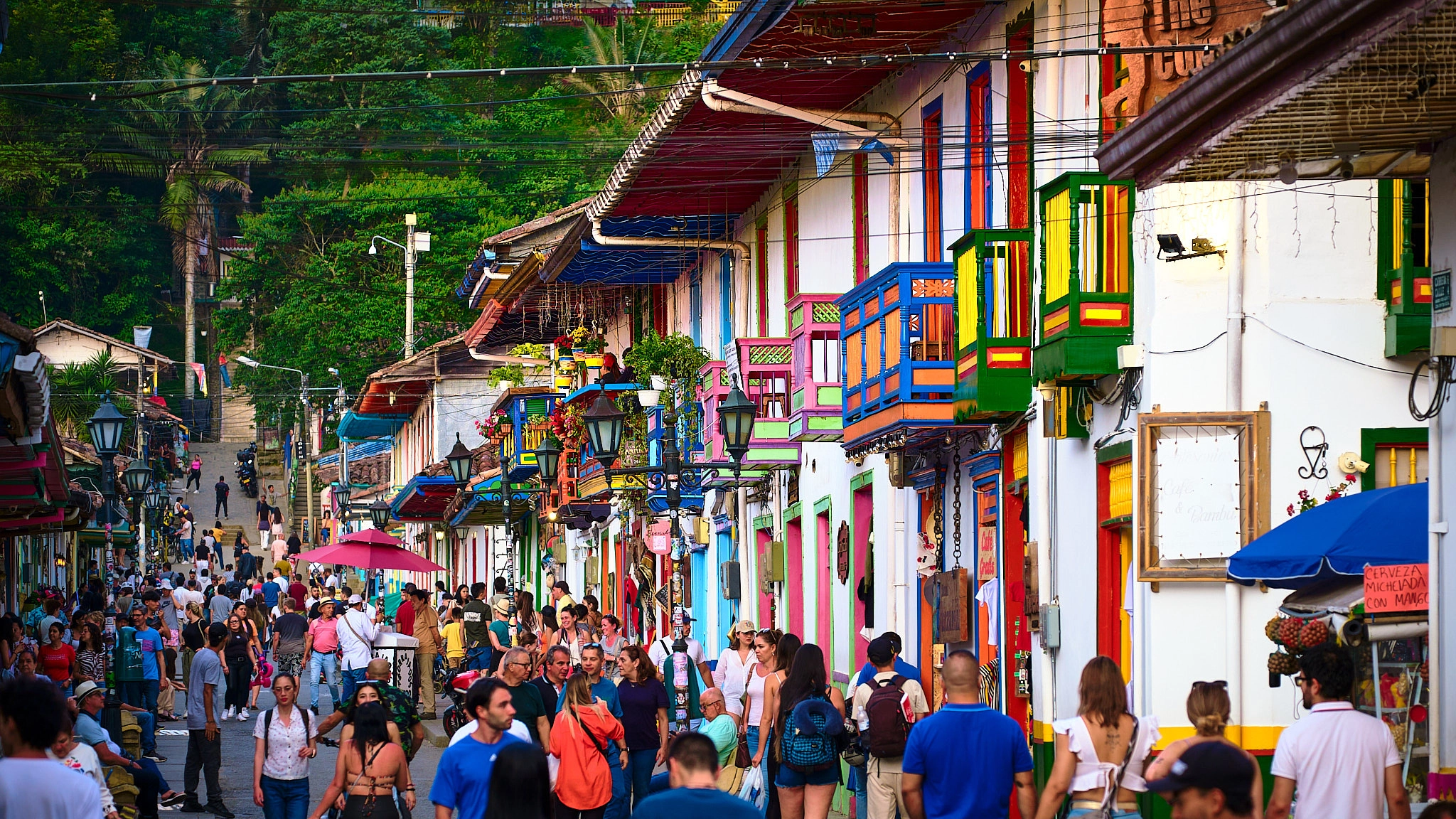
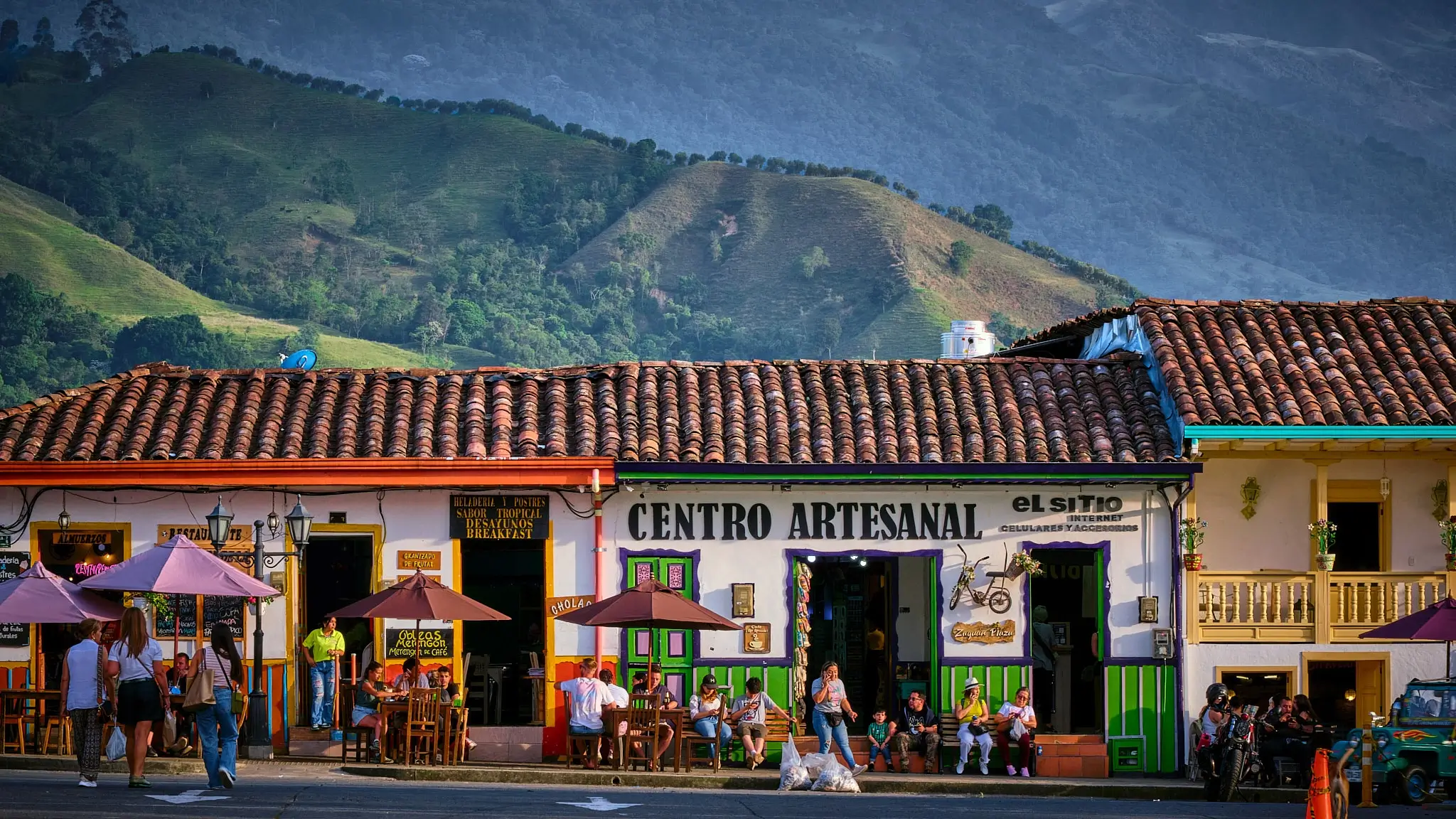
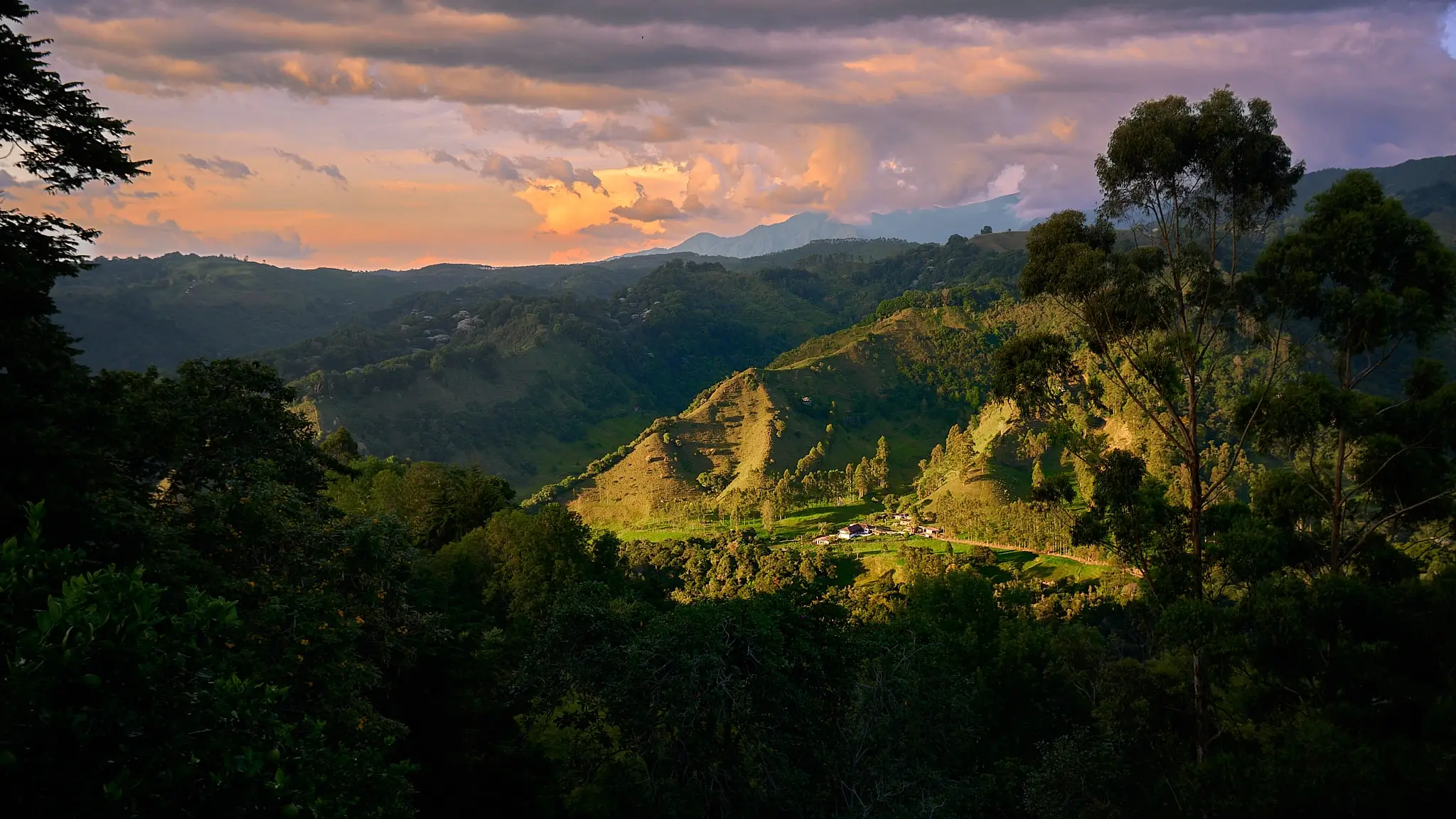
I stroll among the rows of plants with Don Eduardo, the owner of a finca. With the calm and passion of someone who has dedicated their life to this ancient tradition, he shows us the clusters of green and red coffee beans, glistening in the morning sun. Skilled hands pick and select them, choosing only the ripe beans, to then dry them under large tarps. I breathe in the intense and enveloping aromas that rise from the roasting process, as Don Eduardo pours coffee into glasses, teaching us how to appreciate the aromatic and complex nuances of this drink, so beloved by Colombians, that celebrates their deep connection to the land.
The next morning, I head to Filandia. The main square is overrun with market stalls. It is a vibrant chaos of life and sounds, with stands full of tropical fruits and local crafts. The cries of the vendors blend with the noise of customers haggling. The chatter and laughter of women, dressed in bright-colored clothes, drift through the smoke from the grills. I have lunch with lechona3, sitting on the church steps, while I watch the Willys: jeeps from World War II, now used as taxis, shiny and lined up in formation on one side of the square. They connect the small towns of the Eje Cafetero, bouncing along rough roads, loaded with anything: passengers, bananas, pigs, furniture, and of course, countless kilos of coffee.
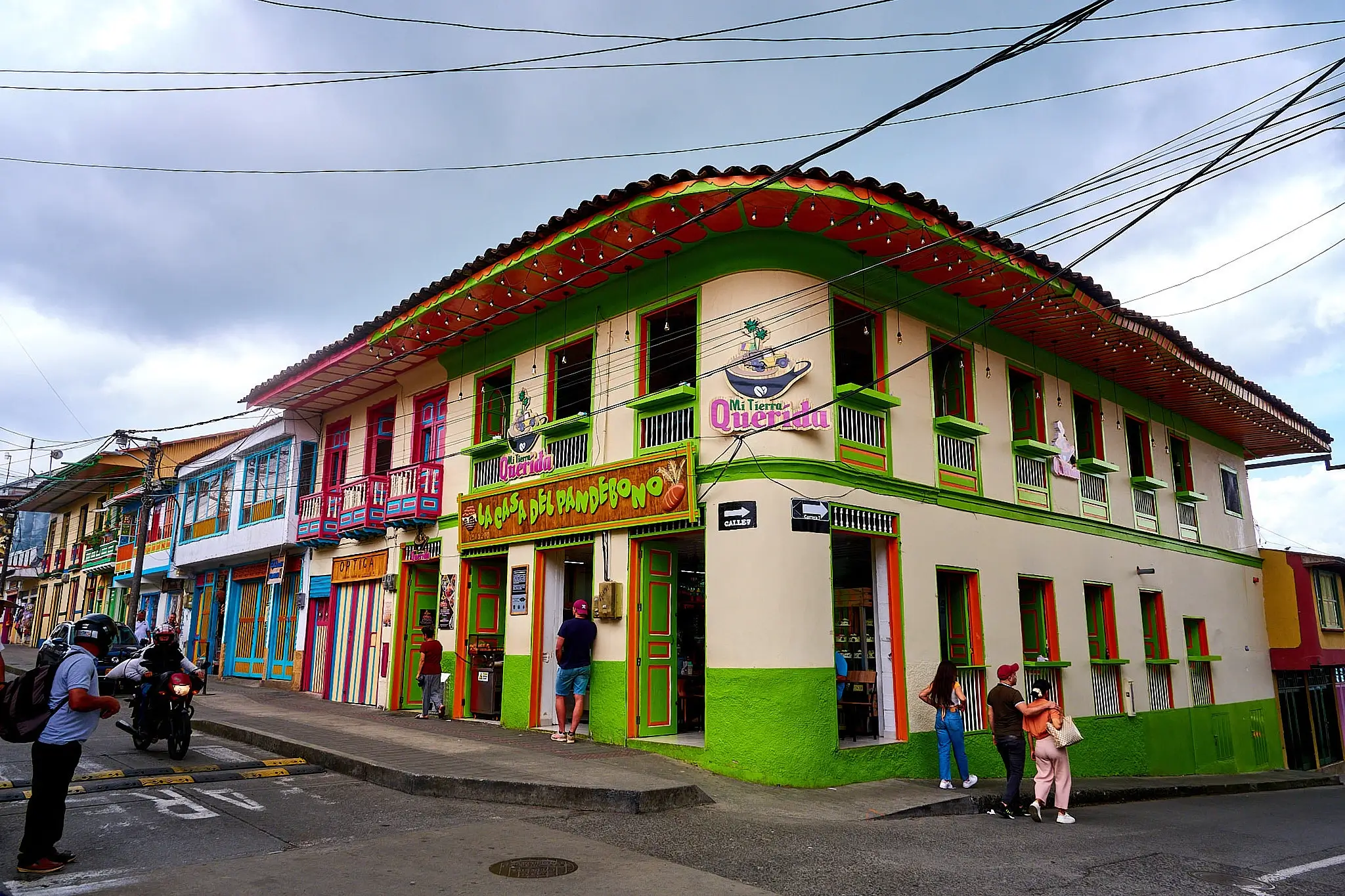
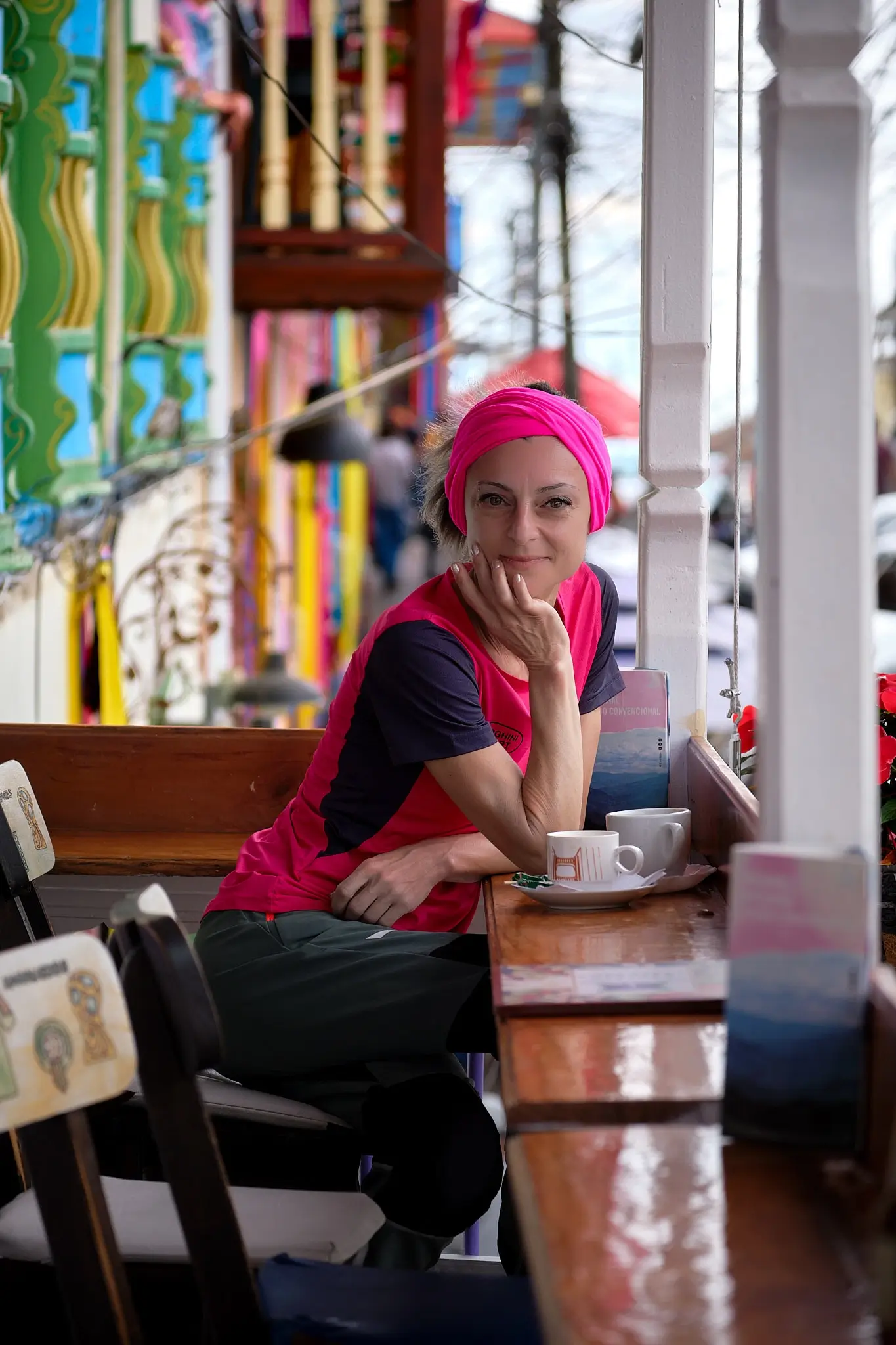
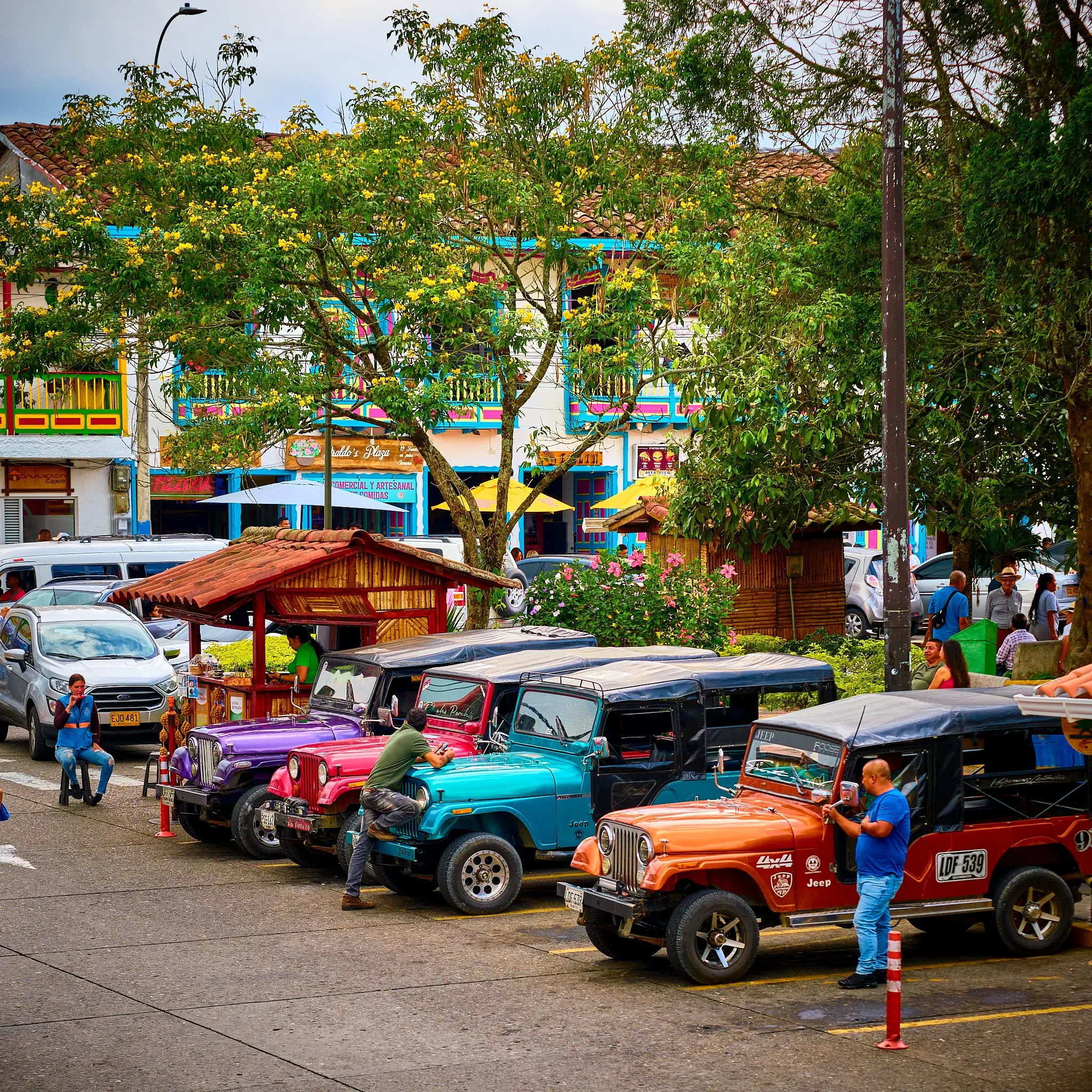
I wander through the alleys looking for an agency to rent a quad, intending to reach the Valle Carbonera in the coming days. I meet Jorge, who will be our guide, and we set the departure for the following morning at 8:00. The quad ride along the bumpy path is as fun as it is tiring, and after three hours, we find ourselves at over 3,000 meters above sea level, facing the densest wax palm forest in Colombia. Jorge looks at the valley and says he could never live in the city; here, he has all of this. His eyes shine, he spreads his arms wide, lifts his head, and, puffing out his chest, takes a deep breath. Some beauties can’t be fully captured by the eyes alone: it seems as though he wants to absorb them by breathing in that air. He looks at me, I look at him, and I exclaim, “¡Maravilloso!” Our gazes return to the expanse of palms. We understand each other. As we walk, he proudly tells me that the Ceroxylon quindiuense is the national tree of Colombia. Then he stops and, with a small knife, scrapes the trunk to obtain thin flakes of wax. He explains that this plant produces a protective substance used to make candles, cosmetics, and lubricants. The collection of this wax is carefully regulated to preserve the palms, which are thinning in some areas, like in the Cocora Valley, which we are preparing to visit the following day.
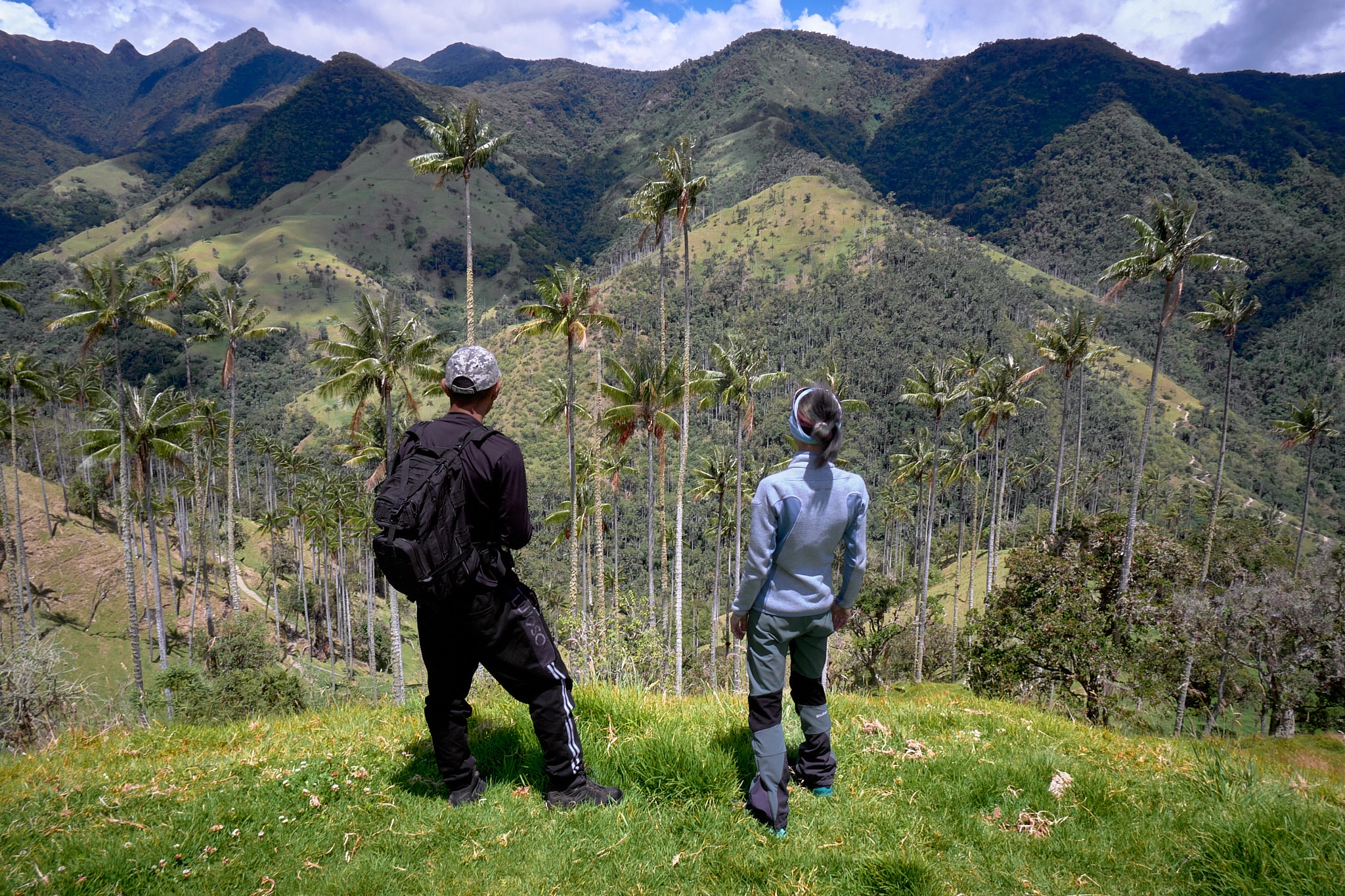
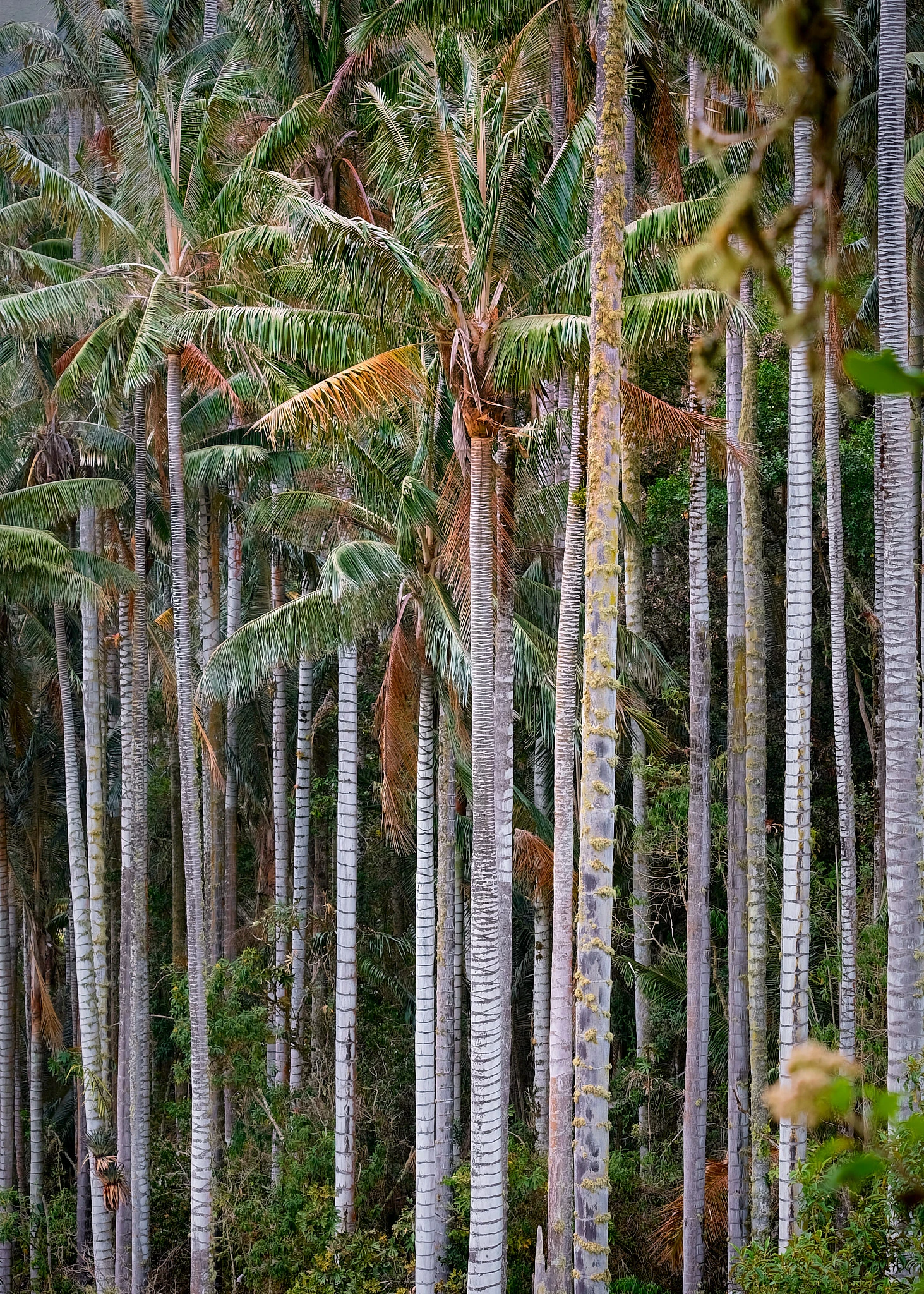
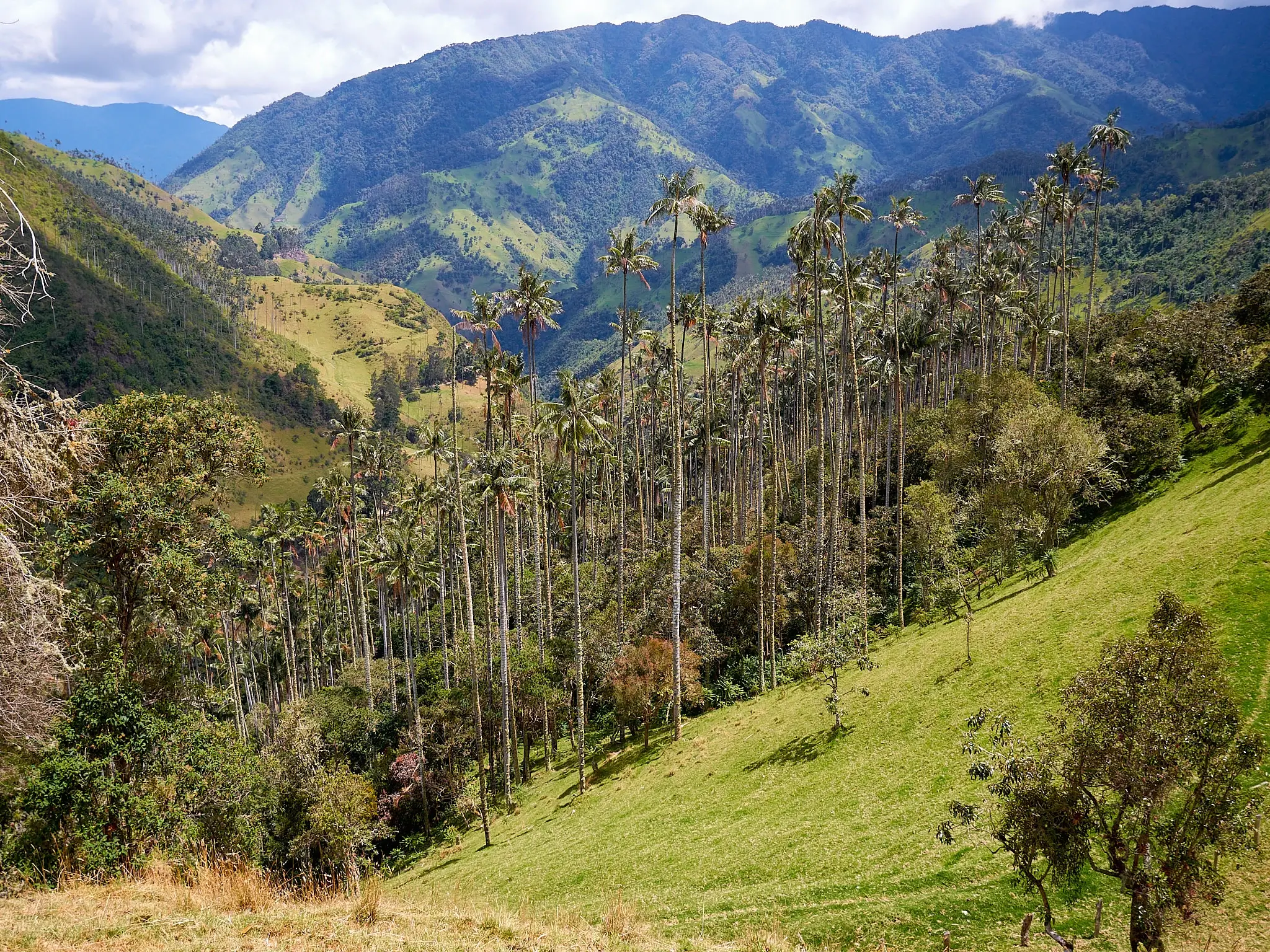
With the sun just risen and our backpacks on, we set off along the ancient path travelled by mules carrying milk. The sound of hooves blends with the murmur of the river, while the dew on the wildflowers reflects the soft light of the morning. The path winds beside the watercourse, with small, rickety bridges, suspended amidst the lush greenery of the valley. As we venture deeper into the forest, the ascent becomes steeper, and the air fills with the scent of damp earth, which accompanies us to the refuge. I sit with a coffee in hand. A boy flips through a book, explaining to the girl next to him that there are over 300 species of hummingbirds. Around me, a crowd of photographers armed with telephoto lenses, all in pursuit of the perfect shot. But the hummingbirds, fast and colorful, dart about in a frenetic dance among the bowls of water placed by the host. After three hours, still no decent photo was taken. My partner, however, proudly shows me the rare shot he managed to capture.
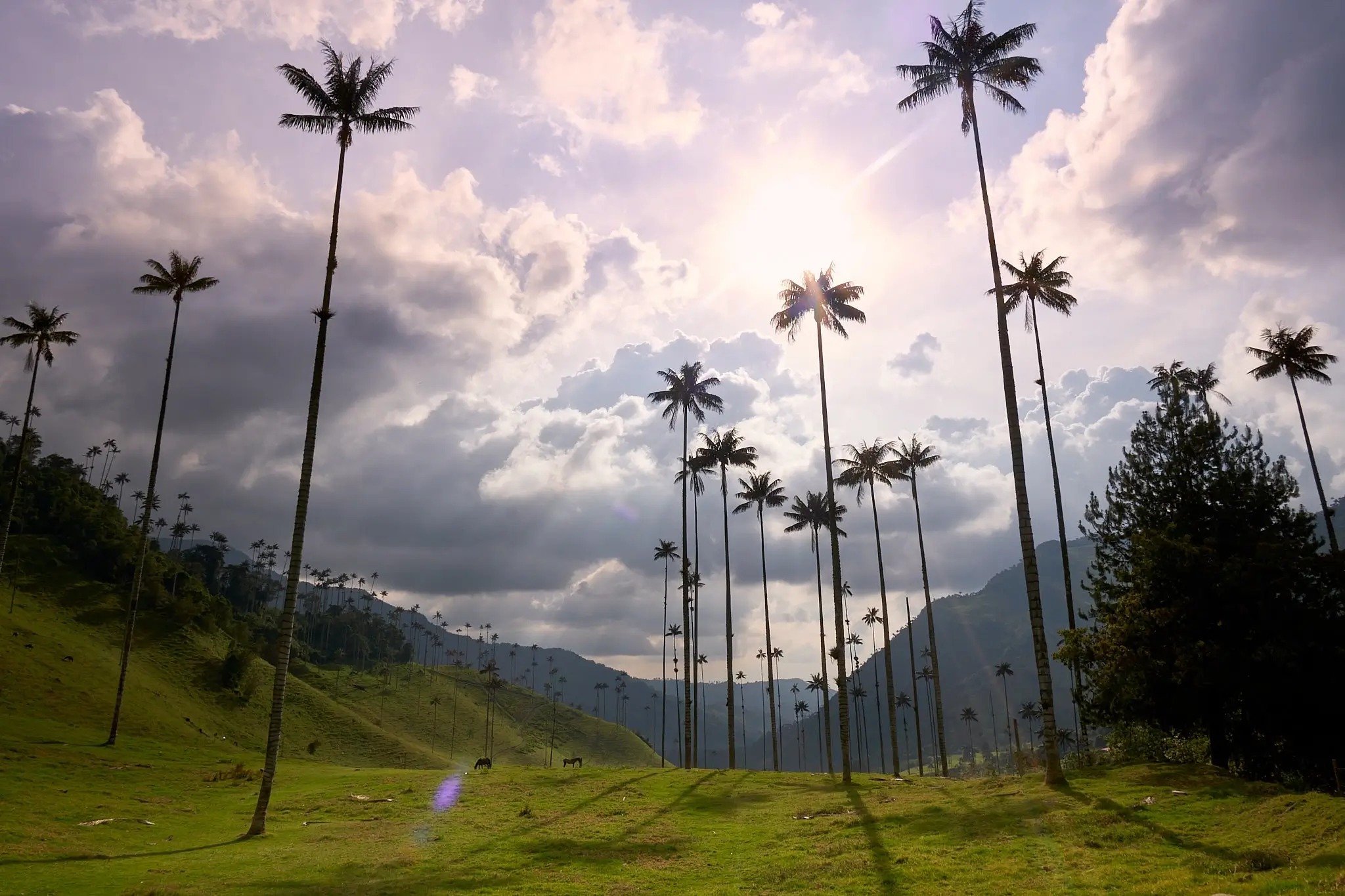
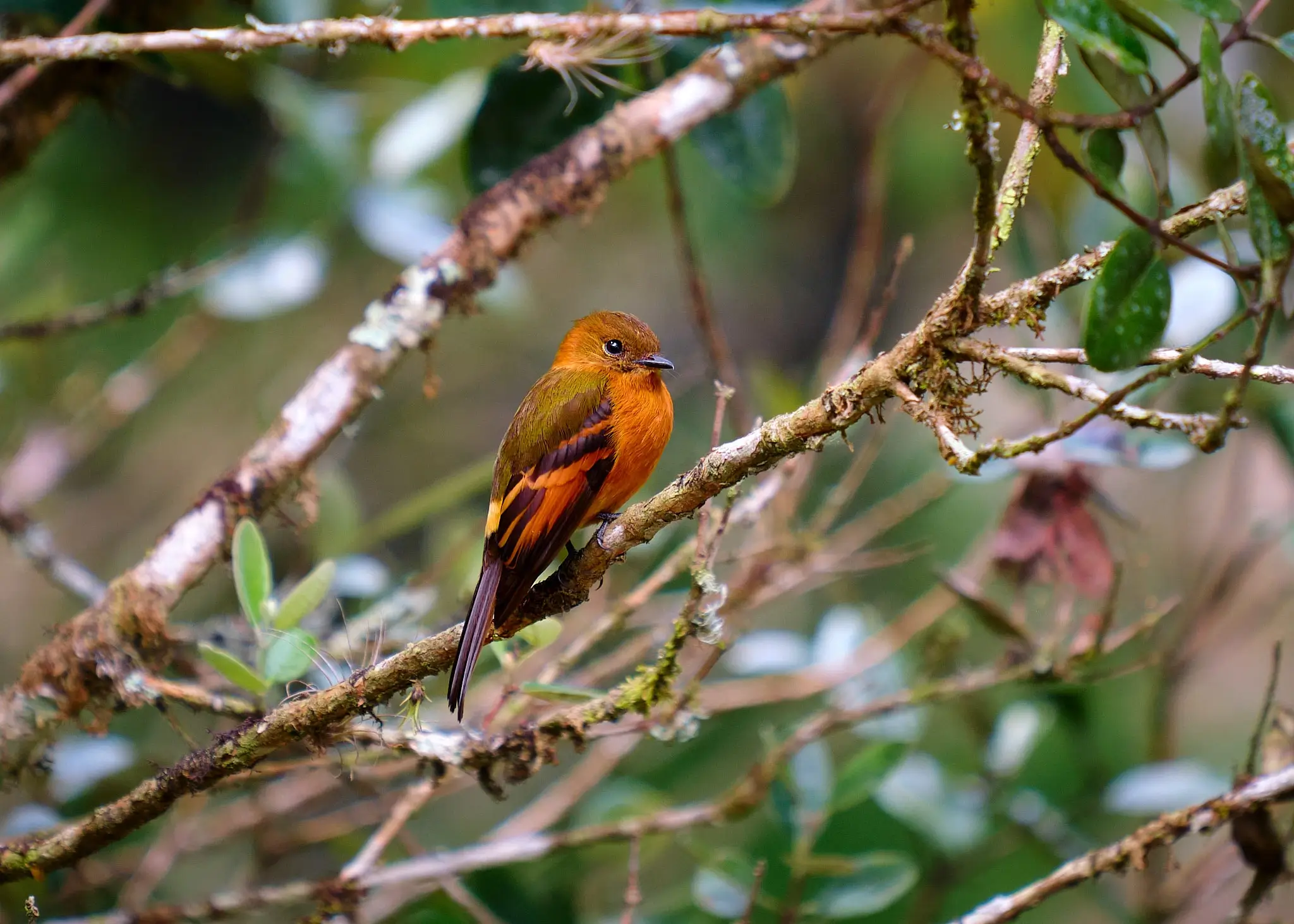
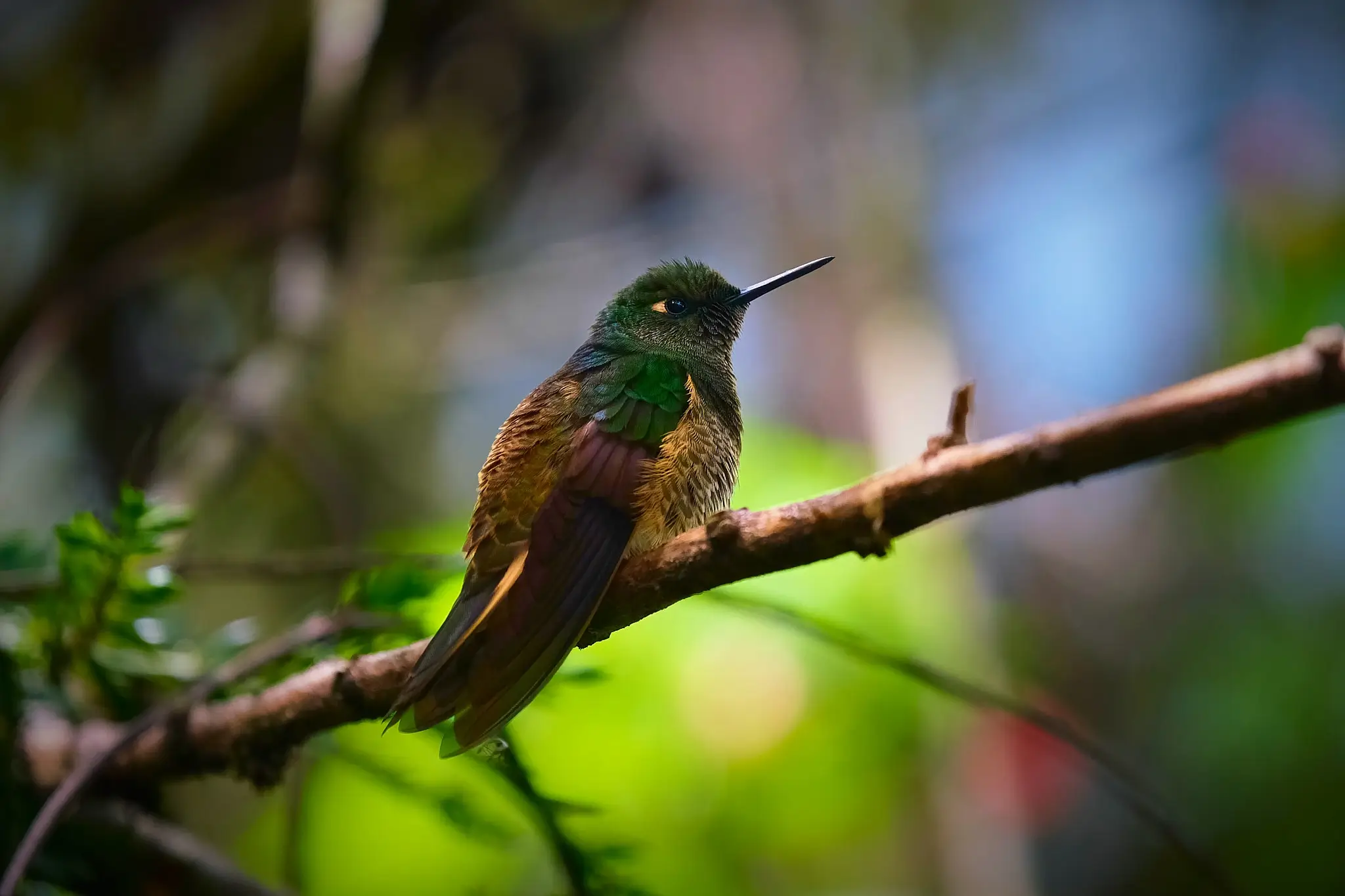
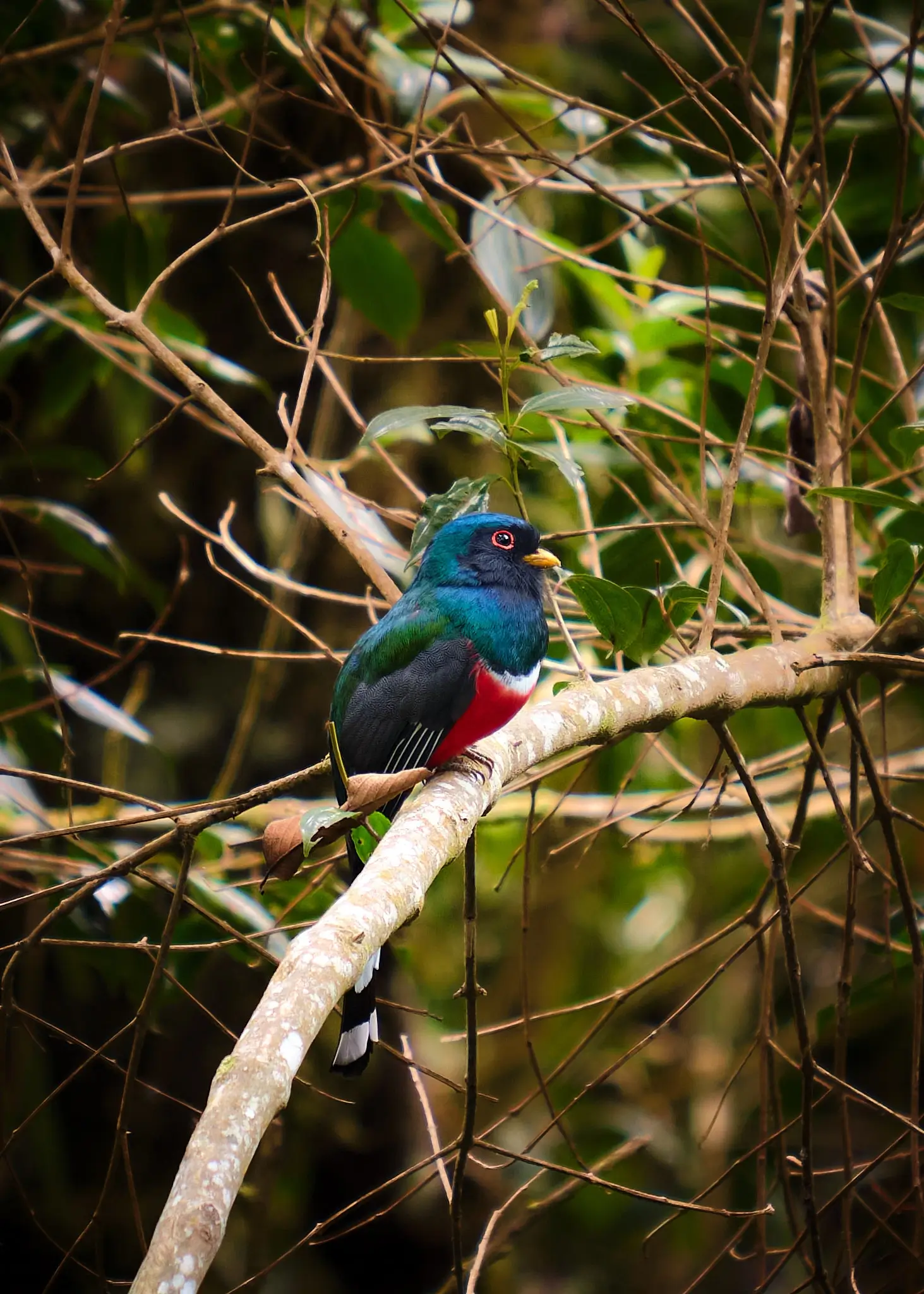
On the way back, we spot a trogon and various species of brightly colored birds that gleam among the emerald foliage of the forest. Then, suddenly, the immense Cocora Valley opens up before us, dotted with towering palms bathed in the golden light of the sunset. The fatigue disappears, replaced by deep awe. The hills stretch majestically, with slender trunks rising toward the sky and crowns swaying gently in the wind. The rays of the low sun filter through the trunks, casting long shadows across the entire valley and painting a dreamlike landscape.
Take care and talk soon!
1 Eje Cafetero: it is a region located in the central area of Colombia, famous for its coffee production. It includes the departments of Caldas, Quindío, and Risaralda.
2 Fincas: they are traditional farms, common in many regions of Colombia, especially in the Eje Cafetero.
3 Lechona: it is a traditional Colombian dish, originating from the Tolima region. It consists of a whole pig stuffed with rice, peas, spices, and roasted in the oven for several hours.